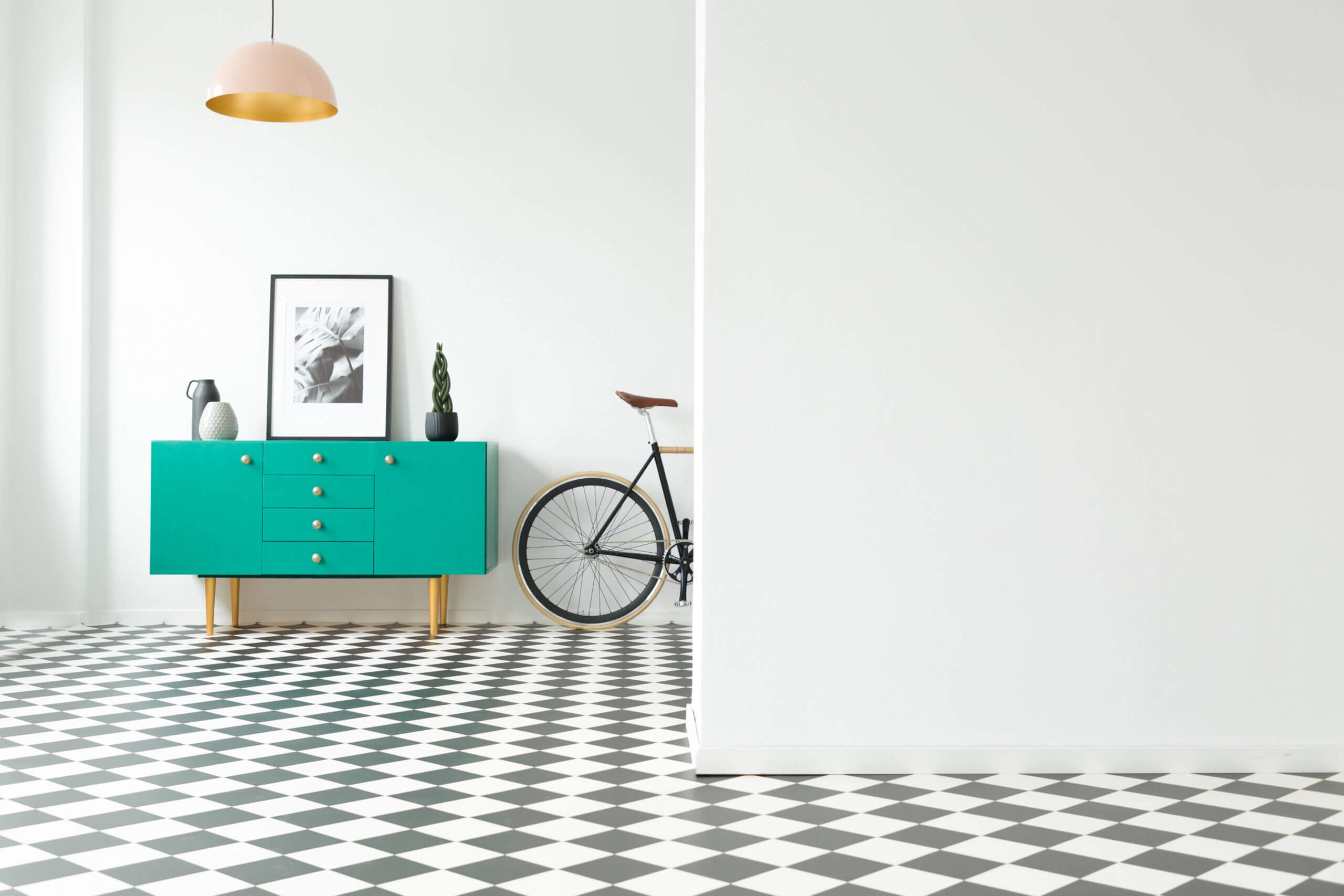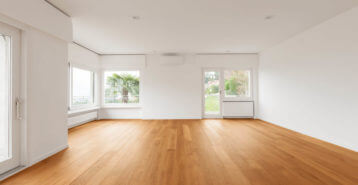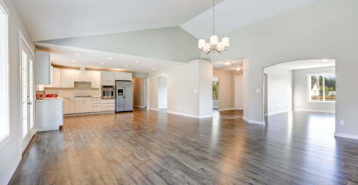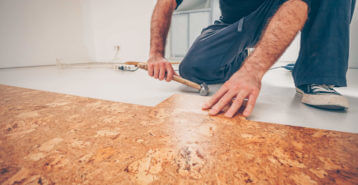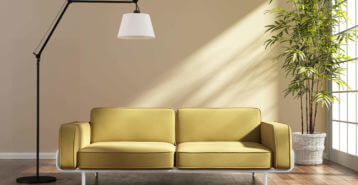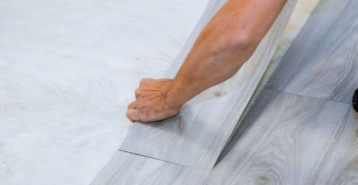Linoleum flooring is not just for your grandma’s kitchen anymore. Although it’s been around for 150 years, this flooring material is making a comeback from its mid-century heyday and growing in popularity, thanks to the variety of colors and designs available at an affordable price. It’s also naturally antibacterial and has eco-friendly qualities, two features that many homeowners are looking for. But there’s much more to be said about this once cast-aside flooring. You’ll see why more homeowners are choosing linoleum floor installation today.
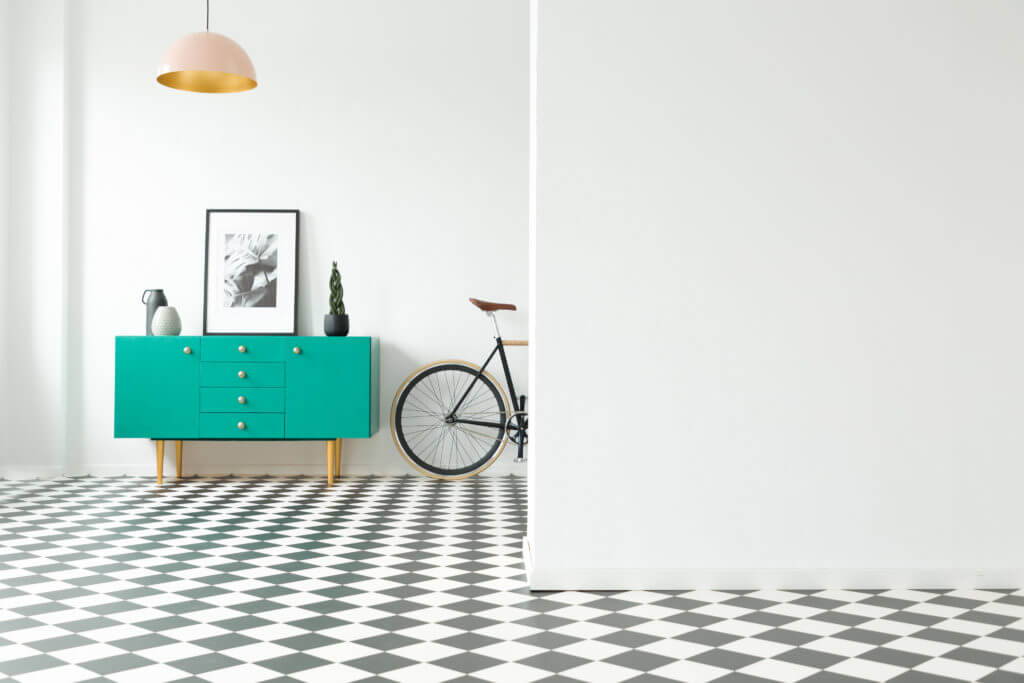
What is Linoleum?
Linoleum is a mixture of materials with the design printed throughout. One of the features of linoleum that many buyers like is that it’s made with natural materials, including linseed oil, rosin and wood. Linoleum floors are made from eco-friendly, sustainable materials and last up to 40 years or more.
Linoleum vs. Vinyl
It’s not uncommon for people to confuse linoleum with vinyl floors — or to be pitted against one another. Vinyl is different in that it is made in layers, like laminate flooring. Linoleum is also made with all-natural materials making it eco-friendly. It does not emit harmful chemicals. Another selling point of linoleum is that it can last up to 40 years or more, whereas vinyl tends to last up to 20 years.
Linoleum Sheets vs. Linoleum Floor Tiles
Homeowners can purchase linoleum in sheets, tile or planks. Sheets, which are glued down, are the oldest form and still very popular. They typically need to be installed by a professional, but are more cost-effective than linoleum tiles or planks.
Linoleum floor tiles and planks are less common than sheets. Tiles are modular and usually come in 10″ x 10″ or 20″ x 20″ squares. These options are becoming attractive to DIYers, as they “click together” and more manageable to install on your own. A sealant is recommended over the linoleum so that it maintains its color over time.
Cost of Linoleum Flooring
Compared to other flooring options, linoleum is quite affordable, ranging from $2 to $6.50 per square foot on average.
Features that will impact the price include whether you purchase it in tiles or sheets and the thickness of the flooring.
- Linoleum floor tiles: $3.50 to $6.50 per square foot
- Linoleum sheet flooring: $2 to $4 per square foot
Note that compared to vinyl flooring, linoleum tends to be more affordable. Vinyl costs between $2 for sheet vinyl and $7 per square foot for vinyl planks. Installation by a flooring professional is also affordable for linoleum floors because of the ease of putting down the flooring.
Where Does Linoleum Fall Among Top Homeowner Flooring Choices?
In Modernize’s September 2023 flooring survey, nearly 8.5% of homeowners indicated they have linoleum floors in their homes currently. Of more than 2,500 homeowners planning to install new flooring in the next 12 months, 4% of respondents said they would be choosing linoleum.
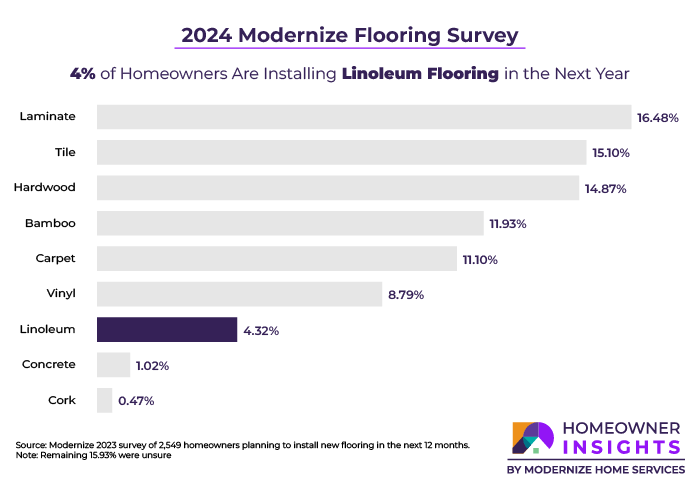
Benefits of Linoleum Floors
- Easy to install. With linoleum now sold with adhesive already attached, putting down linoleum can be quick and easy.
- Versatile. Because the design is printed in the linoleum, the options for colors and images (including mimicking hardwood flooring) are endless.
- Antibacterial. The natural materials used to make linoleum are antibacterial, a good option for those with allergies. It’s so effective, healthcare facilities often use linoleum.
- Easy to maintain. Linoleum is a low maintenance flooring. Simple sweeping and mopping does the job on an everyday basis. Since it’s a slick surface, it makes clean up easy.
- Eco-friendly. Like we mentioned earlier, linoleum flooring is made of all-natural materials, making it easy to biodegrade when it’s done serving its time as your floor. It also doesn’t emit volatile organic compounds, or VOCs. For homeowners spending the time to make green choices, linoleum is a popular choice.
More Notes About Linoleum Floors
No material is perfect, and linoleum is no different. So while it’s cost effective, easy to clean and durable, there are some downsides to mention.
- Dents. Linoleum is susceptible to pressure, so heavy furniture, high heels and sharp objects might leave behind unsightly dents.
- Discoloration. While the natural materials are a plus for health, the linseed oil can change color over time, turning the linoleum a yellowish hue. This seems to happen more in areas that don’t get a lot of sunlight, such as flooring that has an area rug over it. Thankfully, the ambering doesn’t mean it needs to be replaced — try a mixture of water, vinegar and baking soda as well as exposure to some sunlight.
- Not waterproof. Linoleum is water resistant, but it’s not waterproof. It’s best to not use this material in bathrooms, laundry rooms, and other rooms where there’s going to be a lot of water sitting on the floor.
If you’re ready to speak to a flooring professional about your installing this type of flooring, or other types of flooring for your home, Modernize can help! Use our search tools to find reliable and trustworthy flooring installers in your area.
Compare top-rated flooring pros in your area.
Read real homeowner reviews, explore qualifications, and view promotions. Modernize makes it easy to browse professionals and find one that will be perfect for your project.
